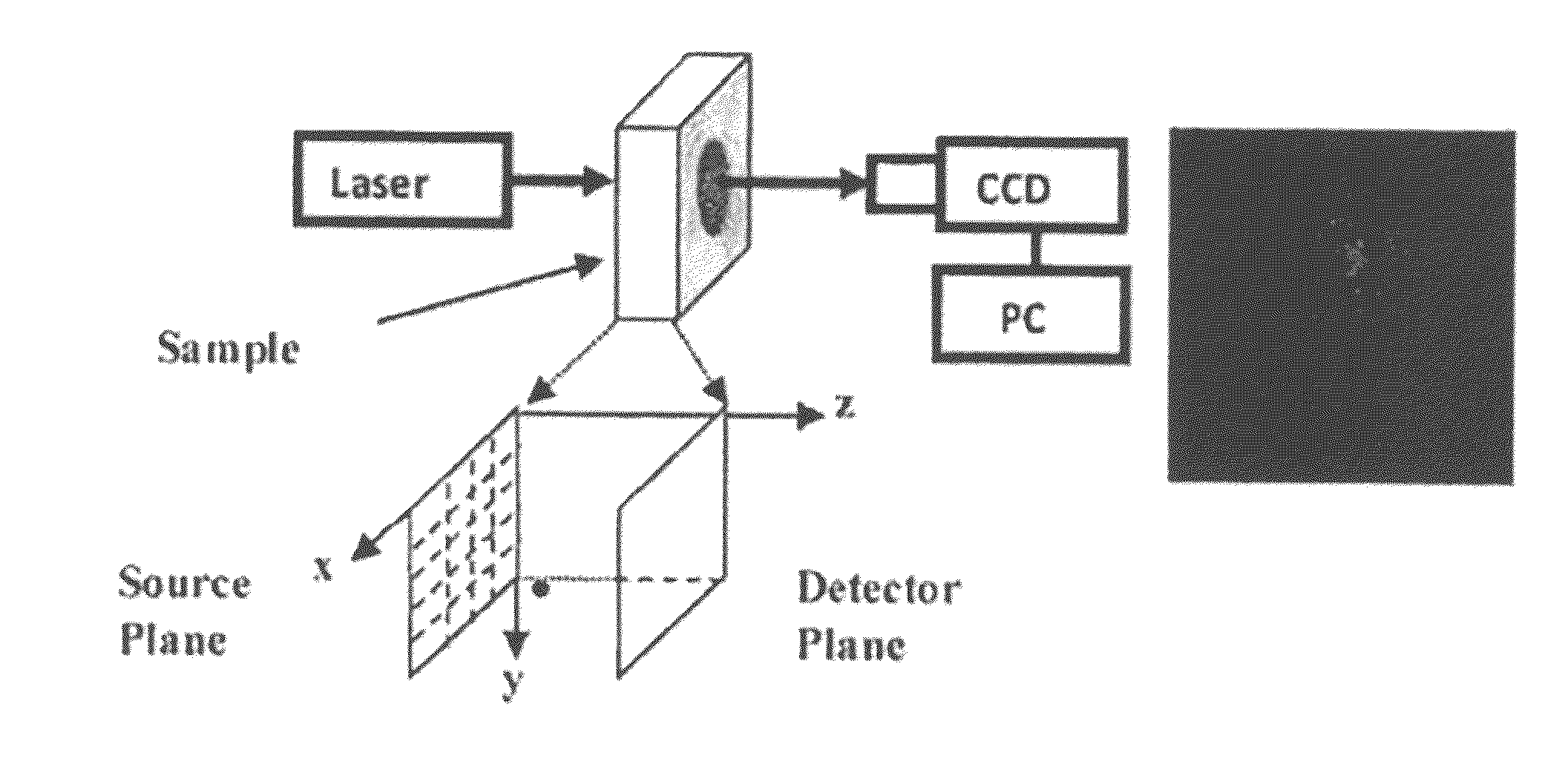Time reversal optical tomography for locating targets in a highly scattering turbid medium
a time-reversal optical tomography and highly scattering technology, applied in the field of time-reversal optical tomography for locating targets in a highly scattering turbid medium, can solve the problems of poor signal-to-noise ratio, difficult to develop reliable and fast approaches, and loss of phase coherence and polarization, etc., to achieve the solution of the eigenvalue problem, the effect of less computation time and high resolution
- Summary
- Abstract
- Description
- Claims
- Application Information
AI Technical Summary
Benefits of technology
Problems solved by technology
Method used
Image
Examples
example 1
Testing TROT with Simulated Data
[0058]To test the efficacy of the TROT approach, we first consider a rather challenging task of detecting and locating six targets embedded in a simulated sample which is a 40-mm thick uniform scattering slab. Its absorption and diffusion coefficients are μa=1 / 300 mm−1 and D=1 / 3 mm, respectively. The incident CW beam was step-scanned in an x-y array of 41×41 grid points with a step size of 2 mm on the input plane covering an 80 mm×80 mm area. Light transmitted from the opposite side (output plane) was recorded at 41×41 grid points covering the same area. No random noise was added.
[0059]The six (M=6) point-like absorptive targets, with absorption coefficient difference of =0.01 mm from the background, were placed at A (24 mm, 26 mm, 9 mm), B (38 mm, 38 nam, 15 mm), C (38 mm, 38 mm, 21 mm), D (40 mm, 38 mm, 21 mm), E (44 mm, 42 mm, 21 mm) and F (30 mm, 30 mm, 31 mm), respectively. The origin (0 mm, 0 mm, 0 mm) was located at the upper-left corner of the...
example 2
Single Absorptive Target at Different Depths
[0065]In the first experiment, the depth (position along z-axis) of an absorptive target was varied to explore how the accuracy of position estimate depended on depth. The target was a glass sphere of diameter 9 mm filled with ink dissolved in Intralipid-20% suspension in water (μs, was adjusted to be the same as that of the background medium, while μa≈0.013 min−1 was about three times higher than that of background medium).
[0066]In the second experiment, the separation between two absorptive targets was varied to test how close those could be and yet be resolved as separate objects. Both the targets were similar to the target in the first experiment.
[0067]In the third experiment, the depth of a scattering target was varied to explore the efficacy of TROT in locating and characterizing a scattering target. The target was a glass sphere of diameter 10 mm filled with Irmalipid-20% suspension in water to provide a transport mean free path of ...
example 3
Resolving Two Absorptive Targets
[0083]In the second experiment using two targets the depth (4 and height (y) were kept same=30 mm, y=26.0 mm), while three different center-to-center separations, Δx of 12.6 mm, 17.6 mm, and 27.6 mm, between them along the x-axis were considered. A cross-sectional pseudo image of the targets when separated by a center-to-center distance of 27 6 mm, generated using the pseudo spectrum is shown in the left pane of FIG. 5(a). FIG. 5(b) shows a similar image for the separation 12.6 mm (separation between nearest edges ˜4 mm). A similar image for the separation 17.6 mm was also obtained (not shown in the figure). The profiles in the x, y and directions through the right target are shown in the right panes of FIG. 5A, FIG. 5B and FIG. 5C. These profiles were used to assess locations of the targets, and the separation between the two targets. In all cases, the targets were determined to be absorptive, because peaks occurred in the pseudo spectrum with the GF...
PUM
 Login to View More
Login to View More Abstract
Description
Claims
Application Information
 Login to View More
Login to View More - R&D
- Intellectual Property
- Life Sciences
- Materials
- Tech Scout
- Unparalleled Data Quality
- Higher Quality Content
- 60% Fewer Hallucinations
Browse by: Latest US Patents, China's latest patents, Technical Efficacy Thesaurus, Application Domain, Technology Topic, Popular Technical Reports.
© 2025 PatSnap. All rights reserved.Legal|Privacy policy|Modern Slavery Act Transparency Statement|Sitemap|About US| Contact US: help@patsnap.com



